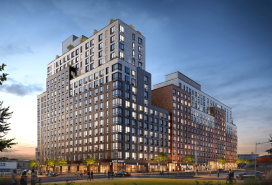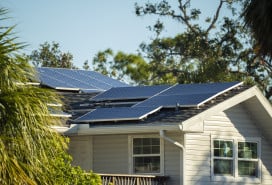
The Brick Underground Podcast Season 2, Episode 2: Welcome 2 the Bronx
One of our favorite—and most popular—columns at Brick Underground is Confessions of a Neighborhood Blogger, a Q&A with the fascinating chroniclers of the city's many neighborhoods. Increasingly, neighborhood blogs have taken the spot that local newspapers used to inhabit, breaking news that sometimes has yet to make larger publications.
Last fall, we featured Ed García Conde, founder of Welcome2theBronx, a blog that has been tracing the many changes, good and bad, and celebrating the triumphs of his beloved borough. He told us about how the arrival of market-rate apartments—some pitched as higher end—has roiled communities and worried locals. "How do you justify putting in high-end developments in the poorest congressional district in the nation?" he shared with us back then. "We need so much more pressing needs to be taken care of than providing for a population that doesn't even exist yet."
We wanted to learn more about what it's like for residents in Melrose, his neighborhood, and the Bronx in general, so we headed to the Bronx Documentary Center for a sit-down with García Conde, who spoke of the responsibilities of neighborhood bloggers, how Welcome2theBronx started, the changes he has seen sweep the borough, why he wouldn't live anywhere else (even though, at one point, he "hated" it and tried living in many other parts of the city before returning), and the constant push-pull between locals and other stakeholders and the developers who have lately been making their presence known in the area. One of his biggest pet peeves? That there's "a 'burgeoning' art scene in the Bronx," an angle many writers use when covering the borough that he says he finds "offensive."
Explains García Conde: "That's false, on the premise that it's all of a sudden here. The Bronx has always created. The Bronx has always had artists." (As he puts it, "even when the Bronx was burning, that was the birth of hip-hop.")
For more, listen in (or download for later listening on our website, or via iTunes and Stitcher):
This podcast was produced by Jenny Falcon and Jhoanna Robledo. Special thanks to Ed García Conde and the Bronx Documentary Center for hosting us for the interview. (Check out their current photography exhibit, Whose Streets? Our Streets!: New York City, 1980-2000.) And many thanks to all of you for listening in, and for your story suggestions.
Please subscribe via iTunes and Stitcher so you can automatically get new episodes, and do consider leaving a review. (We love feedback!)
If you have a great tale about navigating NYC's maze of a real estate market, or about life in this sometimes-frustrating-but-always-fascinating city, comment on this post or email us at: [email protected].

























